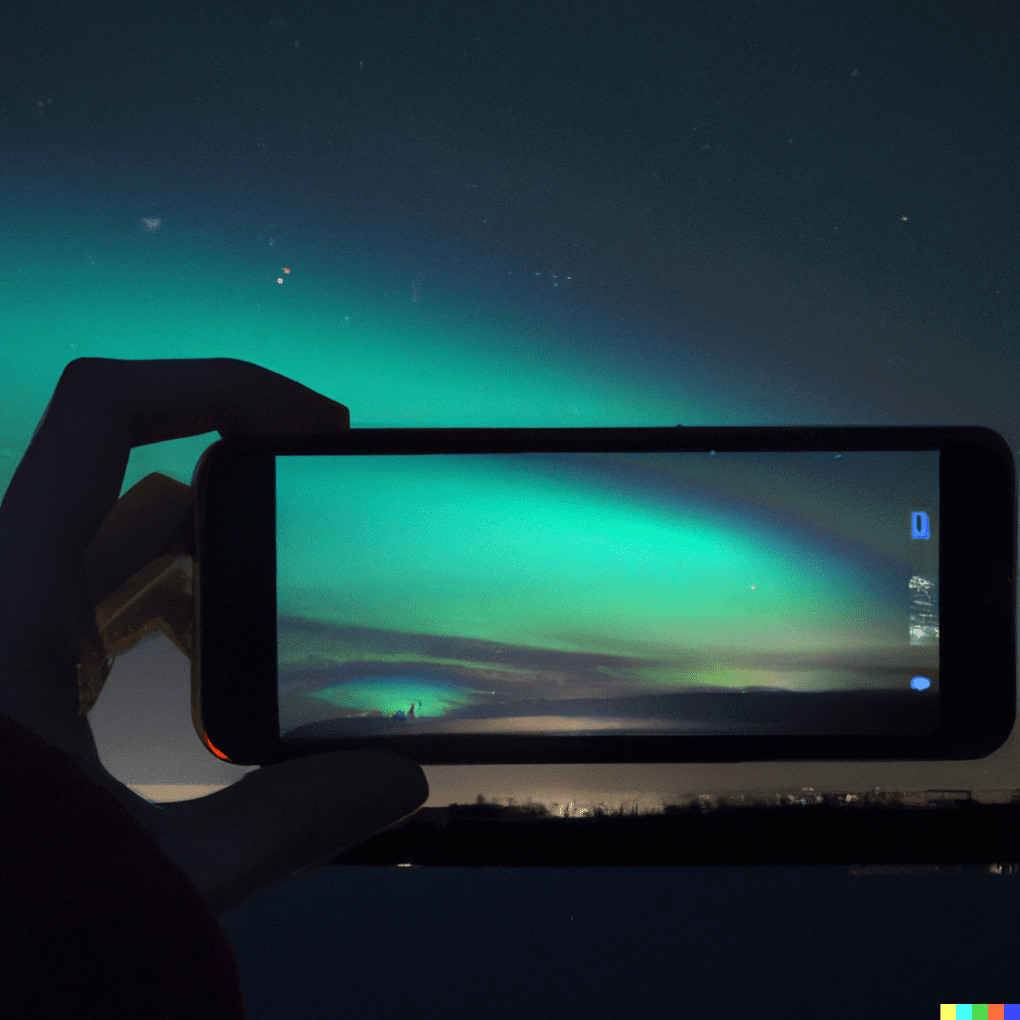Photographing the Northern Lights can be one of the most memorable and beautiful experiences you can have. While traditionally, professional camera equipment is required to capture the Northern Lights, a mobile phone can also be used to take impressive photos. Here are some tips on how to photograph the Northern Lights, whether you’re using a DSLR camera or a mobile phone.

How to Photograph the Northern Lights with a Mobile Phone?
- Find a dark location. To get the best possible photos of the Northern Lights, it’s essential to find a place as dark as possible. This means minimal ambient light, including streetlights, glare from buildings, and the like. The darker the location, the better the photos will be.
- Use a tripod. One of the biggest challenges when photographing the Northern Lights with a mobile phone is that the camera needs a long exposure time to capture the lights. Therefore, it’s crucial to have your phone mounted on a tripod or a similar support to avoid shakes. This will ensure sharp and clear images.
- Use manual settings. When taking pictures of the Northern Lights with a mobile phone, it’s essential to use manual settings to adjust exposure time and ISO. To avoid overexposure, you should choose an exposure time of around 10-15 seconds and an ISO value of around 400-800.
- Focus manually. The Northern Lights can be challenging for the camera to focus on, especially when they are faint and diffuse. Therefore, it’s a good idea to focus manually by tapping and holding your finger on the screen where the Northern Lights are visible. This will ensure sharp and clear images.
- Edit the photos. After taking the photos, it’s a good idea to edit them to get the most out of them. This can be done by adjusting contrast, brightness, and color balance. There are many apps available for editing photos on your mobile phone, such as Adobe Lightroom.
- Have patience. Capturing a good Northern Lights photo, especially with a mobile phone, can take time. Therefore, it’s essential to be patient and experiment with different settings and angles. You can also try taking multiple photos in a row and choose the best one later.
Finally, remember to enjoy the moment while photographing the Northern Lights with your mobile phone. It’s a unique experience that cannot be described in words and can become a fantastic memory for life.
How to Photograph the Northern Lights with a DSLR Camera?
- Have the right equipment. The first thing you need to photograph the Northern Lights is a camera capable of long-exposure shots. A DSLR camera with manual exposure control is the best choice. You will also need a tripod to stabilize the camera during long exposures and a remote control to avoid camera movement when taking photos.
- Find a dark location. The Northern Lights are best seen in areas with minimal light pollution. Try to find a dark location far away from cities or other light sources. If you can’t avoid light pollution, you can try positioning the camera away from the light source.
- Use manual settings. To get the best picture of the Northern Lights, you must use manual settings on your camera. Select manual exposure and adjust the aperture to the widest opening (lowest possible f-number). Then adjust the ISO settings to between 800-1600 depending on lighting conditions and adjust the shutter speed to 10-20 seconds. You can adjust these settings as the Northern Lights change.
- Focus manually. The Northern Lights can be challenging to focus on, especially in low light. It’s best to manually focus on an object far away. If you have trouble focusing on an object, you can use manual focus and adjust the focus ring until the Northern Lights are sharp.
- Take multiple exposures. The Northern Lights can be unpredictable, so it’s a good idea to take multiple exposures to increase your chances of getting a great shot. You can also experiment with different settings to see what works best for you.
- Edit the photos. Even if you’ve taken great photos of the Northern Lights, it’s a good idea to edit them slightly to bring out the best details. You can adjust contrast, brightness, color, and sharpness to make the photos look the way you want.
In summary, photographing the Northern Lights can be a challenging but unforgettable experience. With the right equipment and technique, you can capture beautiful images of this amazing phenomenon. So get out there and give it a try!



